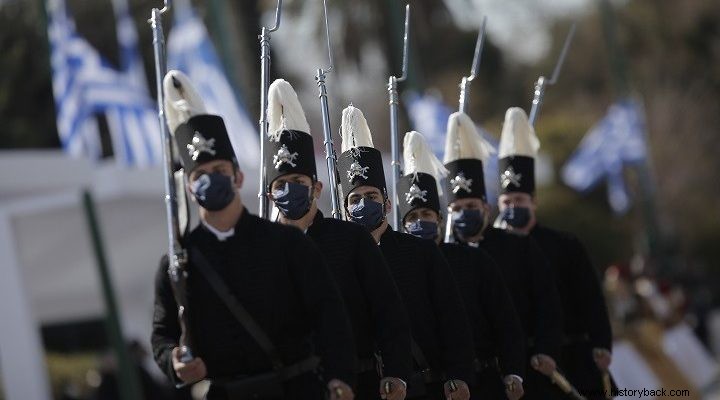
On February 24, 1821, Alexandros Ypsilantis declared the beginning of the Revolution. It was preceded, on February 21, by the battle of Galatsia in Romania, the first battle of the campaign, which ended with a victory for the Greeks. The Greeks were initially advanced as far as Wallachia. Soon, however, when the sultan received Russian assurances that the tsar did not support the Greek movement, he reacted. In April, Turkish forces crossed the Danube and entered the territory of Wallachia, with the consent of Russia, since under a bilateral agreement the permanent presence of Turkish forces there was prohibited. It was headed by the commander of Silistria, Selim Mehmet Pasha.
The Turks also had about 44 small boats that ensured them security of the river line of the Danube. In total, Selim had, together with the crews of the ships, 30,000 men, a force capable of "suffocating the Greek revolutionaries. Turkish divisions of 5-7,000 men moved towards Galatsi while 12,000 Turks marched towards Bucharest. Another Turkish force invaded Little Wallachia (today's Oltenia in Romania).
In Galatsi there were 900 Greeks under Athanasios Karpenisiotis. The area did not lend itself to defense especially against an opponent who was both superior in numbers and possessed cavalry. It was then proposed that the Greeks retreat to more favorable positions. However, the proposal was rejected in order not to leave the population of Galatsi in the hands of the Turks.
The battle in the river/strong>
The Greeks, after it was decided to remain in Galatsi, began to repair three old fortifications that were there, monuments of the last Russo-Turkish war. At the same time, four Greek ships, equipped with light guns, would support the fighting units from the southeast where the Danube flows near the city. Knowing that the Turks were on their way, the Greeks destroyed the bridge over the river Seretis, to the west, where one of the roads leading from Braila to Galatsi passed. Karpenisiotis with a few horsemen often went to the area of Seretis to personally watch the enemies. On the afternoon of April 30, accompanied by his deputy Karagiorgis and 12 horsemen, Karpenisiotis saw the Turks approaching.
The Turkish advance guard, consisting of 800 horsemen, crossed the river by means of a makeshift bridge and moved further north towards another bridge which the Greeks had not destroyed. The Greeks also galloped to the other bridge and arrived first. But they were few. Karpenisiotis, in order to gain time, decided to fight, after first sending two of his horsemen to Galatsi to ask for reinforcements. Thus 12 Greeks were found against 800 Turks. Performing, quite literally, a miracle, Karpenisiotis and his men endured as long as it took for 600 Greek infantry and horsemen to arrive from Galatsi. Immediately the brave Karpenisiotis counterattacked and put the Turks to flight, pursuing them to the destroyed bridge.
The Turks reinforced their vanguard but were still defeated. But soon they came back numbering now 2,000 men and possessing at least six cannons. The Turks tried to mislead the Greeks by feigning flight in order to drive them in front of their guns. But Karpenisiotis was not misled. Instead he responded in kind as he had also been reinforced with a cannon and 100 more men. So when the Turks attacked based on their numerical superiority, it was the Greek artillery that cut them down with cannonballs from a distance of 40m. After this the Turks retreated leaving behind the 300 dead. The battle at the river Seretis was a Greek tactical success. However, the Turks would soon overwhelm the region.
